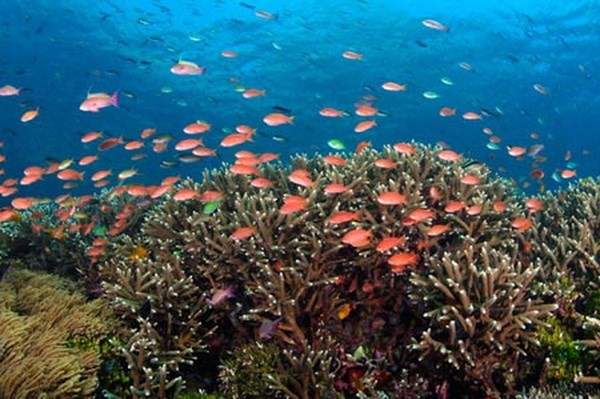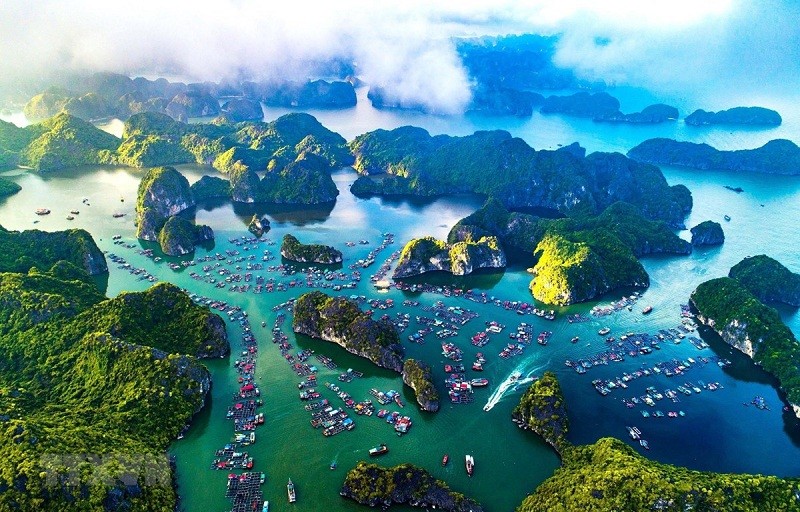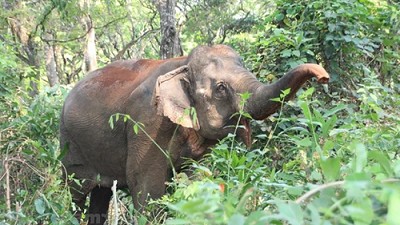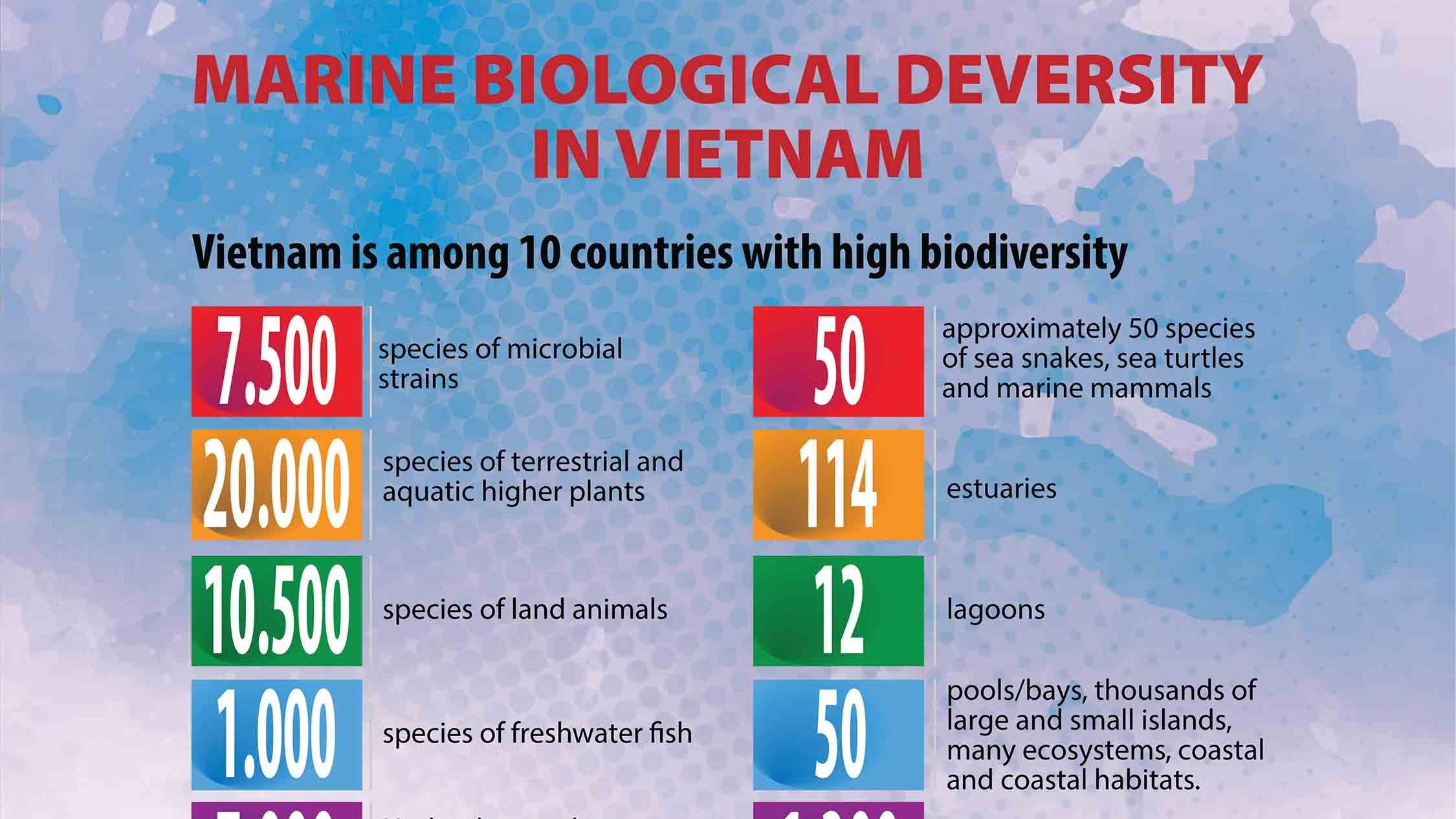
Vietnam - one in five countries strongly affected by sea level rise
Latest
 |
| There are 236 rare and endangered species, including more than 70 marine species listed in the Red Book of Vietnam. (Source: Fistenet.gov.vn) |
However, Vietnam is also 1 in 10 countries severely affected by climate change, 1 in 5 countries strongly affected by sea level rise. Many marine species are being exploited illegally, leading to a decrease in numbers, some of which have become locally extinct. There are 236 rare and endangered species, including more than 70 marine species listed in the Red Book of Vietnam. Fish stocks have declined, from 4 million tonnes in 1990 to less than 3 million tonnes today, and contributed to triggering illegal, unreported and unregulated (IUU) fishing. Fish stocks of high economic value have decreased significantly. The average size of fish and species diversity also decreased. Protecting marine biodiversity becomes an urgent task.
Integrated management method
Vietnam applies an integrated management method of natural resources, marine and island environment that is very popular in many countries around the world. The integrated management method of marine and island resources and environment has been introduced into Vietnam by a number of dedicated staff and PEMSEA since the 1990s. In 2000, Da Nang implemented a pilot project of integrated coastal management. The Dutch government supported a pilot integrated coastal management project in Nam Dinh, Thua Thien Hue and Ba Ria - Vung Tau during the period 2000-2006. Decision No. l58/2007/QD-TTg dated October 09, 10 of the Prime Minister approved the Program on integrated coastal strip management in the North Central and Central coastal regions until 2010 with orientation to 2020.
Integrated management of marine and island resources and environment is understood as the planning and organization of the implementation of inter-regional policies, mechanisms and coordination tools to ensure that marine and island resources are effectively exploited, used, and maintained the functions and structure of ecosystems for sustainable development, in conjunction with the protection of Vietnam's sovereignty, sovereign rights and national jurisdiction at sea.
Integrated management of marine and island resources and environment is expressed in 3 aspects: 1) Systematic, whereby each marine area is considered a unified resource system, managed in a manner that does not separate, subdivide or consider its components separately to ensure its integrity at the same time, considering the coastal areas as a system of interaction between nature and society, between biotic and abiotic factors; 2) Functional, each marine area is a multifunctional system, which should be considered for use in accordance with those functions and within the load bearing limits of the system or sub-system in the region; 3) Integrated management method, vertically (at all levels) and horizontally (stakeholders) to ensure sectorality and multi-level, at the same time, there must be a mechanism for close linkage between management policies and management actions.
Management implementation and enforcement are through marine protected areas. Vietnam's Marine Economic Strategy 2030, vision to 2045 defines a target of 24 marine protected areas. Vietnam's marine protected area system by 2023 includes 16 zones (according to the master plan of Vietnam's marine protected area system to 2020 approved by the Prime Minister in Decision No. 742/QD-TTg dated 26/5/2010) with a total area of 270,271 ha, of which the sea area is 169,617 ha. Currently, 12 marine protected areas have been established and put into operation: Cat Ba (Hai Phong); Bai Tu Long (Quang Ninh); Bach Long Vi (Hai Phong); Con Co (Quang Tri); Cham Islands (Quang Nam); Ly Son (Quang Ngai); Nha Trang Bay (Khanh Hoa); Nui Chua (Ninh Thuan); Hon Cau (Binh Thuan); Con Dao (Ba Ria - Vung Tau); Phu Quoc (Kien Giang); Co To - Tran Island (Quang Ninh). Four marine protected areas are awaiting approval: Hon Me (Thanh Hoa), Nam Yet (Khanh Hoa), Phu Quy (Binh Thuan), Hai Van - Son Tra (Da Nang - Thua Thien Hue).
Marine protected areas possess nearly 70,000 hectares of coral reefs, 20,000 hectares of seagrass beds and part of mangroves; the majority of breeding grounds, spawning grounds and habitats for economical aquatic species; nearly 100 endemic and endangered species. All 16 marine protected areas of Vietnam are concentrated on the coastal area, the furthest is the Nam Yet marine protected area in Spratly island district, Khanh Hoa province. Project 47 has identified 08 more areas with marine conservation potential to add to Vietnam's marine protected area system.
Improve management efficiency
However, the proportion of protected marine area is only 0.185% of Vietnam's marine areas, far from the target of 6% of the Vietnam's Marine Economic Strategy 2030, vision to 2045 and 10% of the United Nations to 2025. Vietnam also focuses on developing marine biodiversity protection through the National Park system (4/16 national parks on islands and at sea (including Cat Ba, Bai Tu Long, Con Dao and Phu Quoc), World Biosphere Reserves (6/11 areas related to the sea and coast: Cat Ba; Red River Delta; Cham Island; Mount Lord; Cape Ca Mau; Phu Quoc - Kien Giang), Nature Reserve (22/55 related to the sea (Son Tra Peninsula, Ba Na in Da Nang, Cham Island in Quang Nam, Binh Chau - Phuoc Buu in Ba Ria - Vung Tau, Ca Mau) bird yard, historical cultural forest and environment nationwide (17/34 areas are concentrated in coastal areas, typically Bai Chay areas, Do Son, Hoa Lu, Ngoc Trao, Nam Hai Van, Bac Hai Van, Deo Ca - Hon Nua).
 |
| The proportion of protected marine areas is only 0.185% of Vietnam's marine areas. (Source: VNA) |
However, the effectiveness of species management and conservation in Marine Protected Areas has not met the target. There have been no studies to comprehensively assess and review the established Marine Protected Areas in terms of ecological protection, marine resources, livelihoods of fishing communities and the effectiveness of management. Vietnam's marine investigation and research have not kept pace with management requirements despite Decision No. 28/QD-TTg approving the research program on shoals, submerged hill mounds and deep sea in the period of 2020 - 2025. Surveys of biodiversity, biological resources and some environmental factors in Vietnam's lagoon ecosystem have not been updated since 2014.
Vietnam needs to develop a synchronous legal document system to complement the Law on Protection of Marine Natural Resources and Environment 2015, the Law on Fisheries 2017 and the Law on Biodiversity 2018. Dissemination and raising awareness of marine biodiversity conservation among the masses and training of professional staff should also be focused. Marine biodiversity cannot be fully conserved without international cooperation, the construction of transboundary marine protected areas and participation in the conservation and sustainable development of marine biodiversity in areas beyond national jurisdiction.









